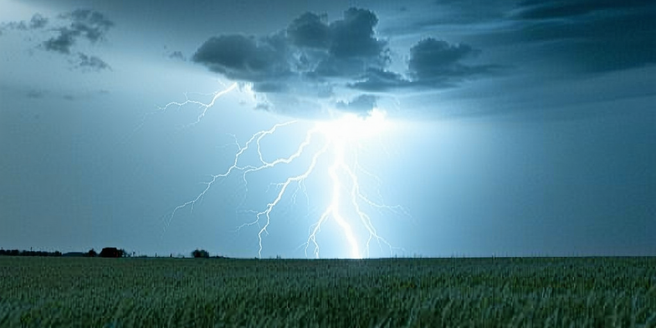
Understanding the Basics of Lightning Formation
Lightning is a fascinating and complex natural phenomenon that begins with a thunderstorm. When the sun heats the surface of the Earth, the warm, moist air rises, creating an ideal environment for storm clouds to form. As the air continues to rise, it cools and condenses into water droplets, forming cumulonimbus clouds. Within these towering clouds, small ice crystals and water droplets collide, generating static electricity. Over time, the charged particles separate, creating regions of positive and negative charges. When the electrical potential between these regions becomes too great, a rapid discharge of electricity occurs, producing a lightning bolt. Understanding the basic formation of lightning is crucial for comprehending how these immense electrical events are born within thunderstorms.
The Role of Electrical Charges in Thunderstorms
Electrical charges play a crucial role in thunderstorms, fundamentally driving the lightning process. Within a thunderstorm, the collision of ice particles, rain drops, and updrafts leads to the separation of charges. Typically, the top of the cloud becomes positively charged, while the base holds a negative charge. The varying charges result in an electric field, which intensifies as the storm matures. When this field becomes strong enough, it prompts a lightning discharge to balance the charge difference. Interestingly, positive charges from the ground are attracted to the cloud base, further contributing to the electrical dynamics at play. Understanding the interplay of these charges is essential for grasping how lightning forms and behaves during a thunderstorm.
How Lightning Finds Its Path to the Ground
Lightning follows a complex path to reach the ground, determined by the electric field created by the charged regions of a thunderstorm. As the electric field strengthens, it creates step leaders, which are invisible channels of ionized air that extend downwards from the cloud base. Meanwhile, upward streamers, which are positive charge carriers, surge from the ground or raised objects like trees and buildings. When a step leader and an upward streamer connect, a complete ionized channel is formed. This connection allows a massive electrical current to surge through the channel, producing the visible flash of light. Understanding this path is crucial to predicting where lightning might strike, aiding in protective measures against its potential dangers.
The Impact of Lightning on Different Environments
Lightning strikes impact various environments differently, often with immediate and long-term consequences. In densely forested areas, lightning can ignite wildfires, which may devastate ecosystems but also facilitate new growth. In open fields, strikes may create fulgurites, which are unique glass structures formed when lightning fuses sand or soil. Urban environments face different challenges, such as power outages, fires, and damage to infrastructure. Structures equipped with lightning rods can mitigate damage by safely directing lightning to the ground. Aquatic environments, too, witness the effects, where strikes can electrify the water, causing danger to marine life. Overall, understanding lightning’s environmental impact is essential for developing strategies to manage its risks and harness its energy.
Safety Measures and Myths About Lightning Strikes
With lightning’s power comes the need for awareness and safety measures to prevent harm. One common safety myth is that lightning never strikes the same place twice; in reality, locations such as tall buildings and trees can be struck repeatedly. To stay safe during a thunderstorm, it is crucial to seek shelter indoors, away from windows and electrical appliances. Avoid taking shelter under trees, as they can conduct electricity and increase risk of injury. Another myth is that rubber tires of a vehicle provide protection; however, it is the metal body that channels the electricity around the passengers inside. Understanding these safety truths and dispelling myths helps reduce the hazards associated with lightning strikes, ensuring better protection for individuals during storms.
